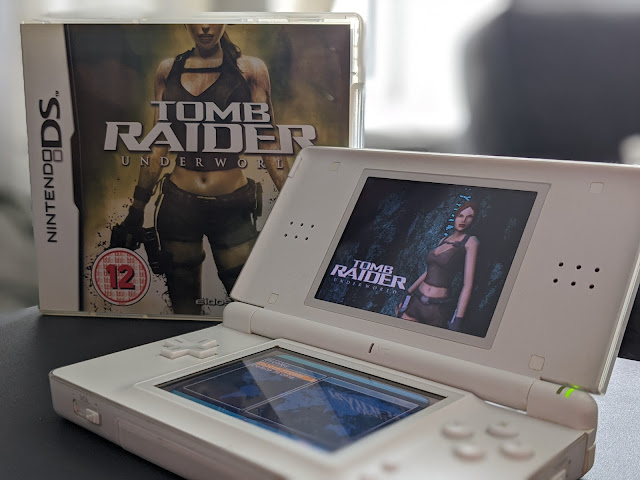It’s been a while since I sat down to write this opening bit before playing the game of the day. It was never a regular framing device but, in this example, I think it’s worthwhile to let anyone reading know where I stand on Tomb Raider before I start.
The original Tomb Raider is one of the best games of all time. The series’ puzzle-platforming debut offered atmosphere and exploration on a level rarely bettered, and a level of control over your character so detailed that it’s since been somehow re-framed as a bad thing by consumers used to modern, context sensitive, hyper-streamlined movement requiring the bare minimum of input from a player.
This masterpiece was followed by a technically far superior sequel that was only slightly less brilliant than the original - although the signs were there of the directional miss-steps the franchise would soon take. Tomb Raider III was iterative in every regard except one: ther was a marked increase in violence and it was the first game to clearly focus more on shooting people. Not, in case it’s unclear, a good thing.
In retrospect it should have been pretty worrying that a series had gone from revolutionary to rote in just three short years, and there are many fascinating articles dotted around the internet about what was going on at Core at the time, but the marketing machine rumbled on and this pretty poor game sold six million copies.
Console exclusivity with Playstation ended and the next two games, Chronicles and The Last Revelation, appeared also on the Dreamcast. Now, I love Sega’s final, ahead-of-its-time, machine as much as the next self-respecting game fanatic, but if you can’t see that the controller has two few buttons for this series (and Tony Hawk, for that matter) then there’s no helping you. Nevertheless, these two games brought the IP back close to the quality of Tomb Raider II, although familiarity was doubtless beginning to breed contempt from players and journalists alike, and, although the controller had enough buttons, the original PlayStation was creaking under the strain of running the later games.
Many would then consider the next 3 years as a Tomb Raider free zone. But there were actually 3 more games released under the Tomb Raider banner between ‘The Last Revelation’ and The Angel of Darkness.
The two side scrolling platform outings on the Game Boy Color brought the series back to its roots, being, as they were, incredibly stylish homages to the kind of Prince of Persia style adventures that had inspired the original game.
Then there was ‘The Prophecy’, released in 2002 for the GBA, an interesting offshoot into an isometric viewpoint.
The focus was fairly shooty and on the whole it was far removed from the puzzle-platforming elements that defined every game in the franchise to that point. With Ubisoft Milan at the helm, it was also the first Tomb Raider game to be developed by someone other than Core; The Prophecy, indeed.
And then came ‘The Angel of Darkness’.
I can’t tell you anything you don’t already know about the franchise's disastrous attempt to update with its leap to the Playstation 2. I have no new insight to the two times the project was restarted from scratch, nor can I further explain the cuts and delays that marred it’s eventual release… in fact, as per its appearance in my unplayed back-log, at this exact point in time I have nothing to say about this game at all.



























